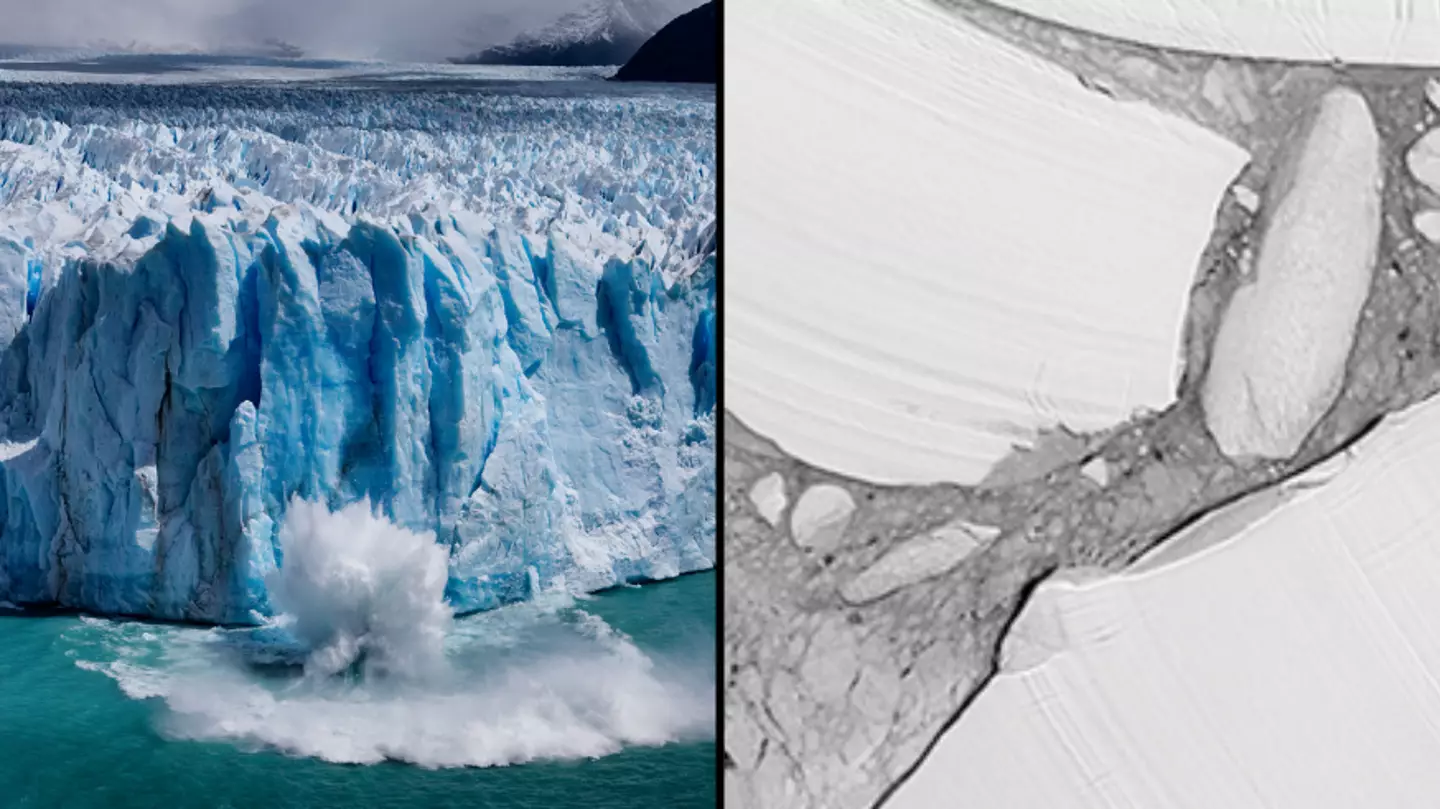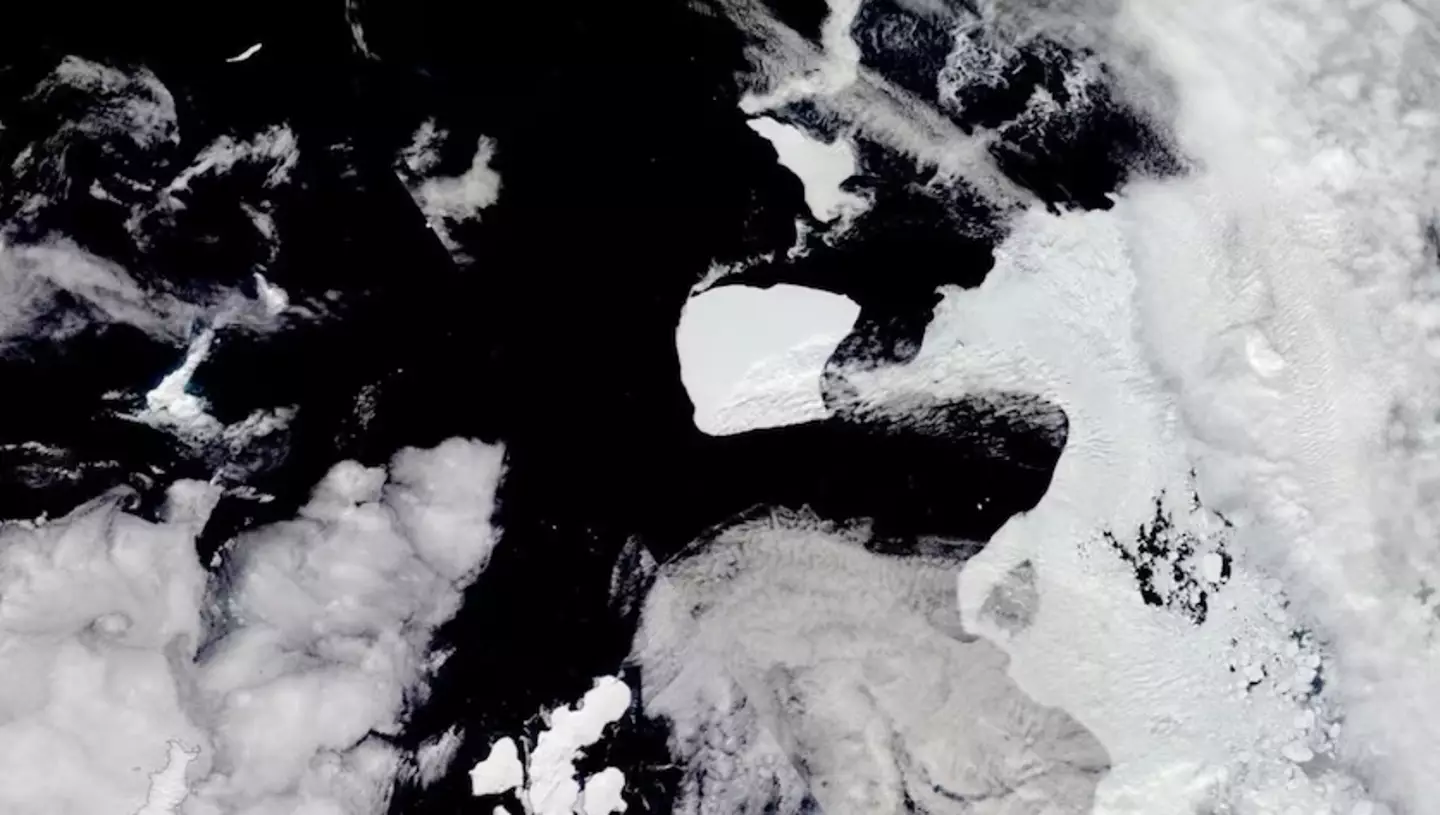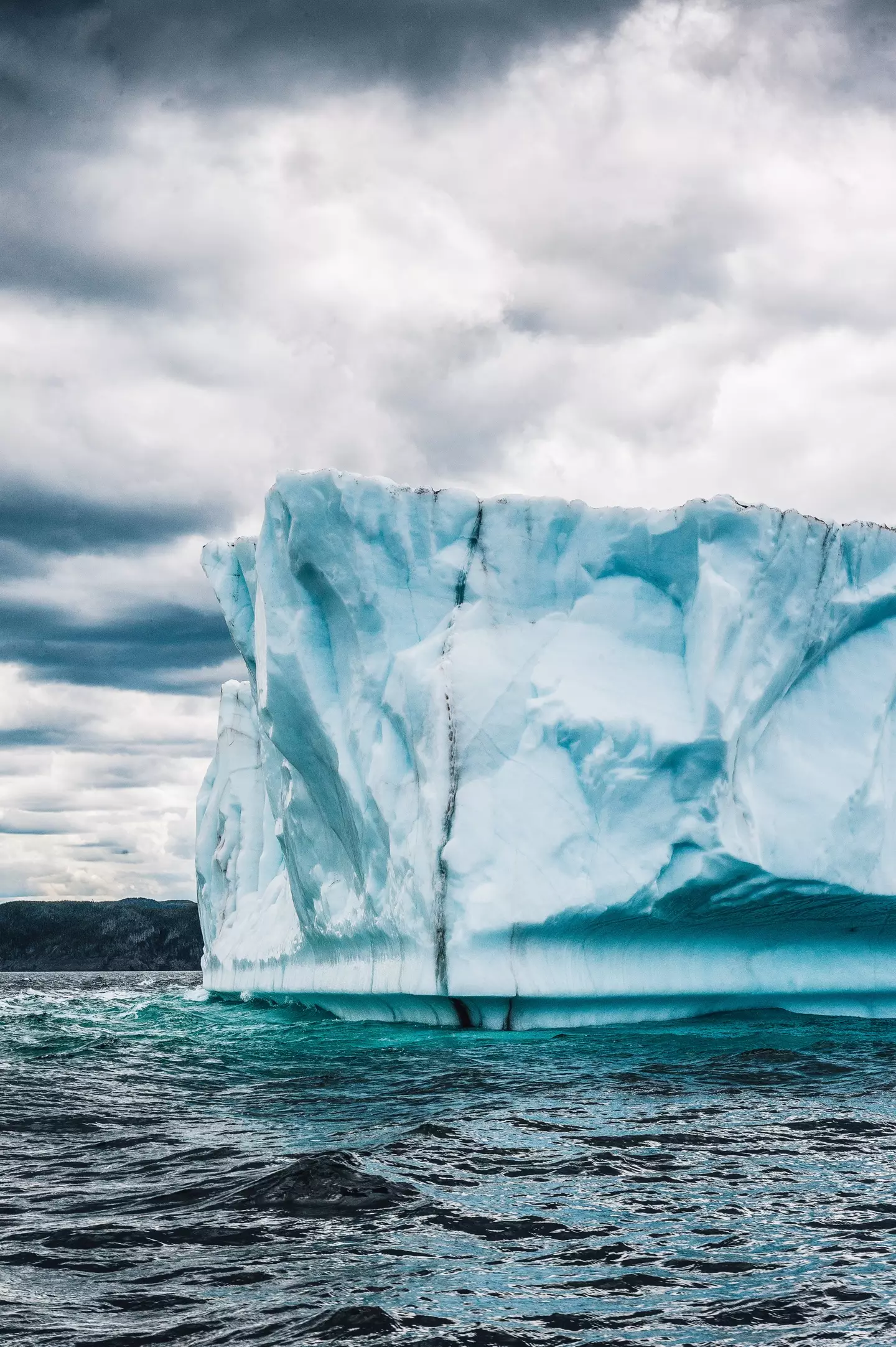
The largest iceberg on planet Earth is about to break away from Antarctic water boundaries.
A23a first split away from the Antarctic coastline in 1986 and has spent more than 30 years attached to the ocean floor.
However, the mammoth ice slab has recently become unanchored from the Weddell Sea and has been recorded drifting at speed.
Advert
Probably better classed as an ice island than an iceberg, A23a is twice the size of Greater London and spans 1,500 square miles.
As one of the bergs that broke off from the White Continent’s Filchner Ice Shelf 37 years ago, A23a is notorious for its thickness as well as its width.
It’s said that the ice is around 400m deep, which makes it taller than the London Shard (309.6m) and skyscraper 22 Bishopsgate (278m).

In recent months, A23a has reportedly been propelled forward by high winds and fast currents.
Advert
Interestingly, it is now passing the northern tip of the Antarctic Peninsula and could be on its way towards British territory.
Speaking about the mass, Dr Andrew Fleming, a remote sensing expert from the British Antarctic Survey had his say.
He told the BBC: “I asked a couple of colleagues about this, wondering if there was any possible change in shelf water temperatures that might have provoked it, but the consensus is the time had just come.
“It was grounded since 1986 but eventually it was going to decrease (in size) sufficiently to lose grip and start moving. I spotted first movement back in 2020.”
According to the site, the berg is expected to journey to the Antarctic ‘Circumpolar Current’.
Advert

From there, it will be ‘thrown’ towards the South Atlantic on a path known more commonly as ‘Iceberg Alley’.
The latter ‘alley’ stretches from the coast of Labrador to the southeast coast of the island of Newfoundland.
From there, A23a has the chance to veer into the British Overseas territory of South Georgia Island.
Located around 1,340 miles east of Argentina’s Cabo Virgenes, the island plays host to millions of penguins, seabirds and seals.
Advert
If the ice island does ground in South Georgia, it could have a colossal effect on wildlife as it could potentially disrupt foraging routes.
If pathways and areas are cut off by A23a, it could prevent adult animals from feeding their young.
However, it isn’t all doom and gloom.
If and when the iceberg meets its sticky end, it will release mineral dust - a source of vital nutrients for organisms in oceanic food chains.
Advert
As per BBC, Dr Catherine Walker, from the Woods Hole Oceanographic Institution, said: “In many ways these icebergs are life-giving; they are the origin point for a lot of biological activity.”
Walker, who was born the same year that A23a was formed, added: “I identify with it; it's always been there for me.”
Topics: Environment, Weird, World News
